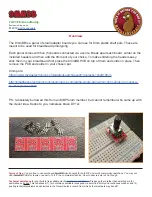
3 General principles
3.1 Measurement principle
FLUXUS G809
2020-06-25, UMFLUXUS_G809V2-2EN
12
Standard volumetric flow rate
N/ S
Volumetric flow rate of a gas under specified standards conditions. During the measurement of a gas, the temperature and
the pressure have a strong influence on the measured operating volumetric flow rate. The measured operating volumetric
flow rate can be converted into the standard volumetric flow rate
N
by the transmitter:
N
=
where
For the setting of the standard pressure p
N
and the standard temperature T
N
see section 18.3. The compressibility coeffi
-
cient of the gas K is stored in the data set of the fluid or can be entered by the user. The operating temperature T and the
operating pressure p can be fed into the transmitter via the inputs or entered as constant values.
Mass flow rate
= · ρ
The mass of the fluid that passes through the pipe per unit time. The mass flow rate is calculated from the product of the
volumetric flow rate and the density ρ.
3.1.2
Measurement of the flow velocity
The signals are emitted and received by 2 transducers alternatively in and against the flow direction. If the fluid is flowing,
the signals propagating in the fluid are displaced with the flow.
Caused by this displacement, the sound path of the signal in flow direction is reduced and the signal against the flow direc
-
tion is increased, see Fig. 3.1 and Fig. 3.2.
This causes a change in the transit times. The transit time of the signal in flow direction is shorter than the transit time
against the flow direction. The transit time difference is proportional to the average flow velocity.
The average flow velocity of the fluid is calculated as follows:
v = k
Re
· k
a
·
where
N
– standard volumetric flow rate
– operating volumetric flow rate
p
N
– standard pressure (absolute value)
p
– operating pressure (absolute value)
T
N
– standard temperature in K
T
– operating temperature in K
K
– compressibility coefficient of the gas: ratio of the compressibility factors of the gas at operating conditions and at standard con
-
ditions (Z/Z
N
)
v
– average flow velocity of the fluid
k
Re
– fluid mechanics calibration factor
k
a
– acoustic calibration factor
Δt
– transit time difference
t
γ
– transit time in the fluid
V
·
V
·
V
·
V
·
V
·
p
p
N
-----
T
N
T
-----
1
K
---
V
·
V
·
m
·
m
·
V
·
V
·
t
2 t
-----------













































